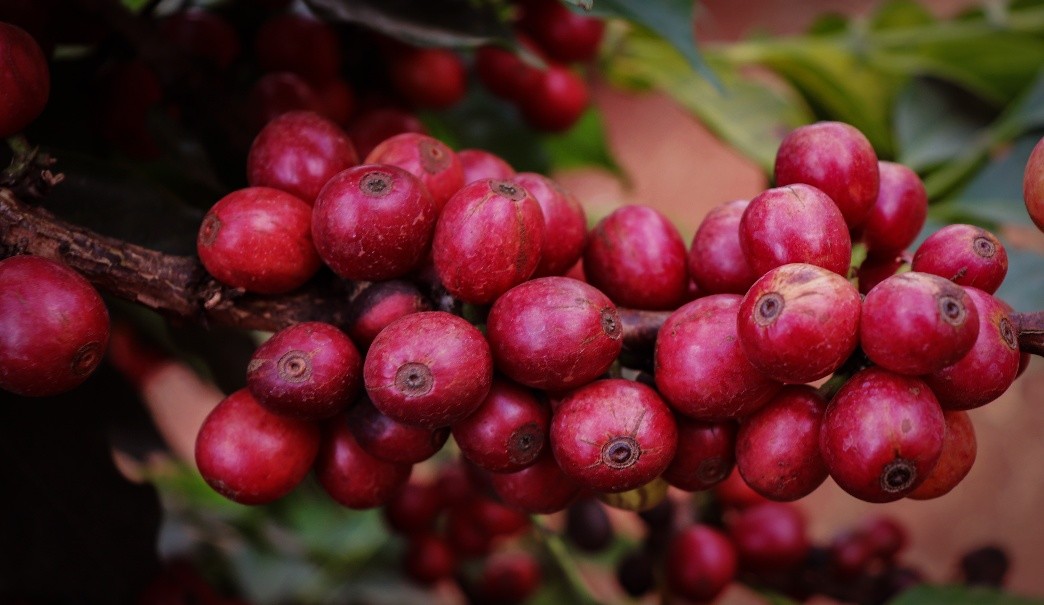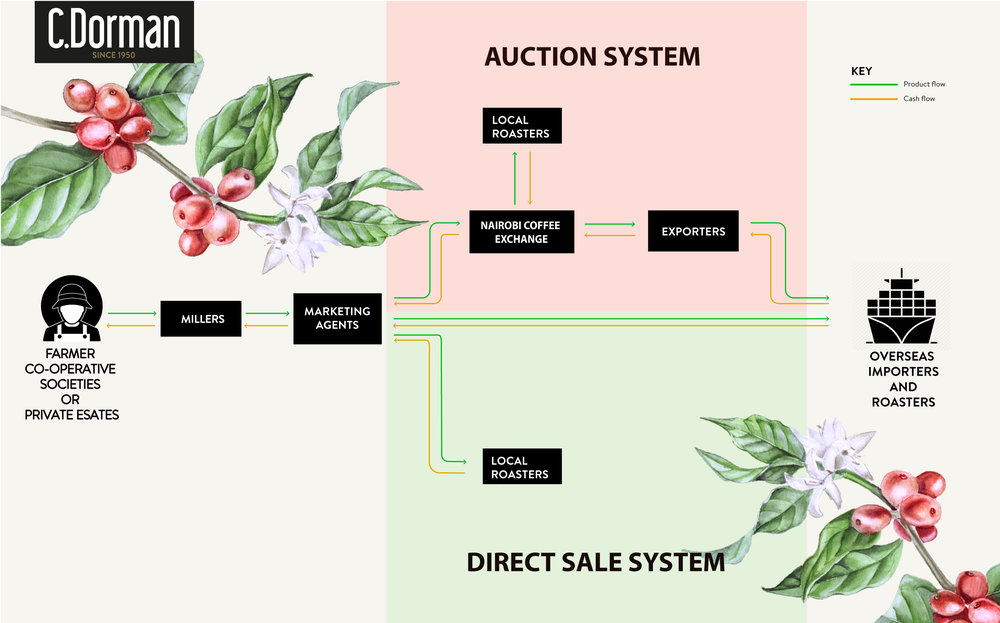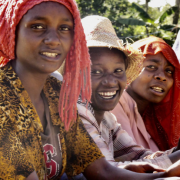Kenya Coffee Bean Flavor History Development Story| Kenya NCE and its Marketing Operation System
Caramel. Grapefruit. coke. Ripe tomatoes. Red grapes. Bright. Plums. Sweet. Delicious. Apricot. Pineapple. Passion fruit. Chocolate. We all know that Kenyan coffee is one of the most complex coffee in the world, but they are also the most complex-thanks in large part to the country's unique chain of custody, marketing processes and logistics.

Kenya's coffee history is not as long as its northern neighbors Ethiopia and Sudan, but that doesn't mean it's not that interesting. The first trees were brought by missionaries from Bourbon (now known as Reunion) in the 1890s, but commercialization really began with the establishment of estates owned by Britain and other Europeans in the early 1900s: these landowners, and the British colonial government is interested in monopolizing a large part of the hot drink market by introducing and using coffee in coffee production, which is already a big tea producer. In order to ensure dominance in these areas the colonial authorities banned Kenyans from growing their own coffee and forced them to work as labourers on plantations. By the 1920s, coffee was an important export crop
The Coffee Act of 1933 not only returned the marketing and sale of domestic coffee to Kenya, but also launched the establishment of the Nairobi Coffee Exchange (NCE), a weekly auction that still uses most of the country's coffee sales today.
In the 1950s, in response to the civil strife of the colonial government against indigenous Kenyans, land reform was adopted, allowing Kenyans to grow their own coffee for the first time and depriving many European landlords of their property. At that time, redistribution plans began to create a network of small farmers still dominant in the country: more than 75% of Kenyan coffee farmers own less than 3 hectares of land, while today about 80% of farmers are of Kenyan rather than European origin.
The period after Kenya won independence in 1963 was a period of prosperity in the country because of good weather and high prices; however, a price crisis occurred in the 1990s, forcing many Kenyans to cut down their coffee trees, resulting in a sharp decline in annual production. However, in the 2000s and today, flavor has always been the slogan of the Kenyan coffee industry: the growing demand and the spectacular features of boutique coffee have attracted many coffee enthusiasts. they like the rich, vibrant, yes, very complex flavor found in Kenya because of coffee from many regions.
Because the output of individual small farmers is so small, many of them belong to farmers' cooperatives (FCS), which is regarded as another entity in our role. These societies own and operate coffee factories, which are called cleaning stations here. A FCS may have hundreds to a thousand or more smallholder members delivering cherries to the factory. The factory itself gets a line in credit: coffee is classified and weighed here, and the manufacturer will receive a receipt for the total volume. The farmer is also given some cash to take home, which is the basic price paid at the time of delivery; once the coffee is sold in the export market, he or she will receive a second payment to cover the difference between the delivery price and the sale price, and deduct the necessary expenses. The factory itself gets a line in credit: coffee is classified and weighed here, and the manufacturer will receive a receipt for the total volume. The farmer is also given some cash to take home, which is the basic price paid at the time of delivery; once the coffee is sold in the export market, he or she will receive a second payment to cover the difference between the delivery price and the sale price, and deduct the necessary expenses.
Kenya sells coffee beans through auction and second window. Many factories and agents like to use the auction mode.

Important Notice :
前街咖啡 FrontStreet Coffee has moved to new addredd:
FrontStreet Coffee Address: 315,Donghua East Road,GuangZhou
Tel:020 38364473
- Prev

Kenya Coffee Bean producing area | processing Plant Information and Cup Test report of Kenya Coffee small Farmers' Cooperative
Kenya's coffee growing system is complex, accounting for only a small number of independent estates in Africa, and most of the good coffee is the joint work of producers who submit the fruit on the day of production. If you want to trace the source, you can only start with a primary cooperative or a small washing station. Today, I would like to briefly introduce the four famous cooperatives in Kenya! Mwiria factory introduction farm: Mw
- Next

Knowledge Popularization of Science | History of Kenya Green Coffee manufacturer C.Dorman Company Kenya Coffee supply chain
C. Dorman Ltd was founded by Charles and Ellen Dorman in 1950 and quickly became a famous coffee export company in East Africa. Today, the company is still one of the leading exporters in the region. C. Dorman remains firmly committed to providing the highest quality coffee, while also supporting coffee in Kenya, Tanzania and Rwanda by investing in sustainable development programs
Related
- Detailed explanation of Jadeite planting Land in Panamanian Jadeite Manor introduction to the grading system of Jadeite competitive bidding, Red bid, Green bid and Rose Summer
- Story of Coffee planting in Brenka region of Costa Rica Stonehenge Manor anaerobic heavy honey treatment of flavor mouth
- What's on the barrel of Blue Mountain Coffee beans?
- Can American coffee also pull flowers? How to use hot American style to pull out a good-looking pattern?
- Can you make a cold extract with coffee beans? What is the right proportion for cold-extracted coffee formula?
- Indonesian PWN Gold Mandrine Coffee Origin Features Flavor How to Chong? Mandolin coffee is American.
- A brief introduction to the flavor characteristics of Brazilian yellow bourbon coffee beans
- What is the effect of different water quality on the flavor of cold-extracted coffee? What kind of water is best for brewing coffee?
- Why do you think of Rose Summer whenever you mention Panamanian coffee?
- Introduction to the characteristics of authentic blue mountain coffee bean producing areas? What is the CIB Coffee Authority in Jamaica?

